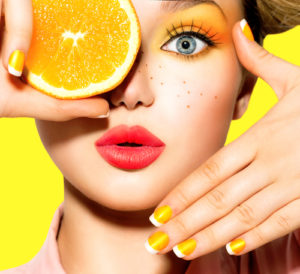What you don’t know about food labels can cost you.

Much like the clothes you wear and the car you drive, the food you eat signals your social status.
In the age of social media, fashion transcends clothing and accessories. Buying the latest luxury handbag is not enough to secure your “high class” status. Nearly everything you purchase has to be trending — and that includes your food. In the past, people hardly looked at what you put into your grocery cart. Now, research supports that the foods you buy are being watched with the same scrutiny a runway model faces.
On Instagram, the hashtag “#food” has more than 338 million posts, and related tags like #instafood and #foodie boast similar numbers. In the U.S., the grocery store industry spends over $190 billion on advertising, and food brand managers pay influencers thousands of dollars for every Instagram-worthy picture promoting their product.
Taking pictures of aesthetically pleasing food is an immensely popular trend that shows no sign of going anywhere. Even my dad takes pictures of his food to send to friends or put on Facebook. On the surface, it seems like people post these pictures for obvious reasons — because they are pretty. But, it goes beyond that.
Bougie Behavior
We all have that friend who has to be seen at the local hotspots and lives a life of luxury on social media, but is much less glamorous offline. Their brand new luxury car is leased, chic apartment is bare of furniture and credit cards are maxed out. Scientists call this behavior ‘pecuniary emulation,’ which refers to lower-class individuals seeking to be thought as members of a higher class.
This was one behavior that scientists wanted to dig deeper into.
Researchers at Texas A&M University wanted to evaluate whether people use food labels to signal a higher social status. They found that about 30 percent of participants in their study used food labels as a way to separate themselves from the masses. In addition to pecuniary emulation, they also found signs of ‘invidious comparison,’ which is when higher-class individuals seek to differentiate themselves from lower-class individuals, achieved by purchasing products too expensive for most people.
“If someone drives a Rolls Royce or Lamborghini then you would assume that they are rich,” said David Anderson agricultural economist and researcher at Texas A&M University. “People who buy those cars know that they are signaling wealth. We found in our research that people are starting to use food in the same way to signal social status.”
Keeping up with the latest trends in food (and letting everyone know you do via social media) demonstrates that you have enough money to purchase these expensive products and belong to a higher social class. These days, sporting a Whole Foods bag is almost as trendy as a brand new Louis Vuitton purse.
Is #food just a trend?
The researchers were quick to point out that the other 70 percent of research participants had a more utilitarian view of food and food labels. The majority of people saw food as just something you consume, but almost a third of the study participants were willing to pay more for food that they thought signaled that they were wealthy.
Scientists have a couple of potential explanations as to why certain types of foods are getting the designer treatment. One of their hypotheses is that food costs are relatively low in the U.S. According to the USDA, Americans spend 6.3 percent of their income on food, the lowest percentage in the world. Compare that with our neighbor south of the border — Mexicans spend a little over 23 percent of their income on food.
Since Americans spend relatively little on food, there is more room in their budgets to spend if they believe it will signal higher status to others. Labels such as “organic”, “locally sourced”, “cage free” or “free range,” just to name a few, are seen as fashionable.
Do labels really matter?
Should you pay more for “designer foods?” The answer is complicated — reallycomplicated. You can find studies that support whatever you want to believe. If you think organic food is more nutritious, there is plenty of research to back up your belief. But if you believe organic food is just hype, don’t worry, scientists have your back.
The same back and forth debate by scientists also applies to other terms typically found on food labels, like ‘cage free’ found on some egg cartons. You would assume that cage free chickens would have a higher quality of life and a more humane existence, but even the Washington Post acknowledges that pecking and even cannibalism is common in cage free egg operations.
One fact is indisputable — foods with designer labels such as ‘organic’ are more expensive. Consumer Reports claims that buying food with the ‘organic’ label will cost you almost 50 percent more than non-organic food.
With no clear answers on if food with fashionable buzzwords on their labels are more nutritious or more humane for animals, it really seems like the decision to pay more for these labels appears to come down to a lifestyle choice. So if paying extra to be seen with a “locally sourced” coffee and a “natural” muffin is worth it to you, then I won’t judge you — but you know others will.